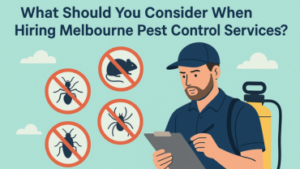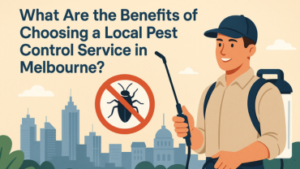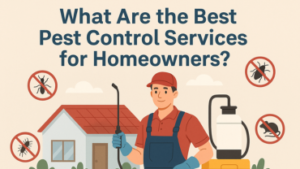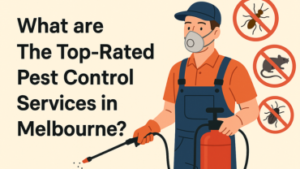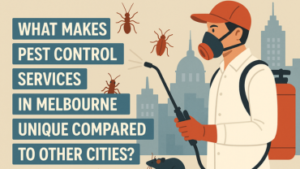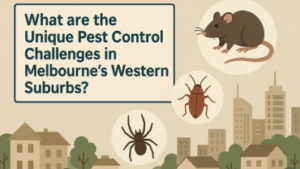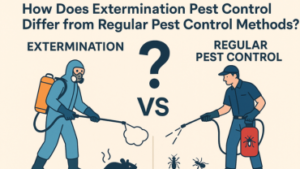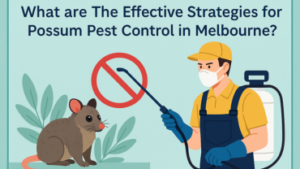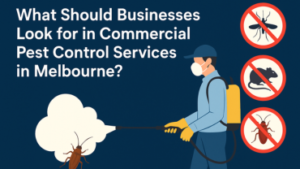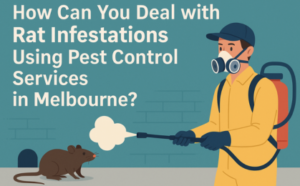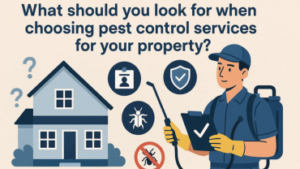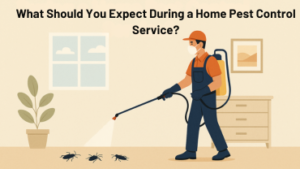Nobody wants uninvited guests, especially the creepy, crawly kind. Whether it’s ants marching across your kitchen counter, spiders lurking in dark corners, or rodents making a home in your attic, pests can turn your sanctuary into a nightmare. Effective
pest control inside the house is essential for maintaining a healthy, comfortable living space.
In this guide, we’ll explore the best methods for
pest control inside house, from DIY prevention to professional solutions. If you’re in Australia and battling pests, you’re in the right place. Let’s dive in!
Why Pest Control Inside Your Home Can’t Be Ignored
That sinking feeling when you spot a cockroach darting behind your fridge? It’s about more than just the heebie-jeebies. Here’s the real deal about pest control inside the house:
Your Health on the Line – Cockroaches trigger asthma, rodents spread disease, and mosquitoes? They’re not just annoying – they can make you seriously ill.
Your Home Under Attack – Termites munch through timber like it’s breakfast, while mice chew wiring that could start fires.
Your Sanity at Stake – Constant worry about what’s crawling in your walls isn’t exactly relaxing.
Bottom line? Smart pest control inside the house means protecting what matters most – your family’s wellbeing and your biggest investment.
Signs You Need Professional Pest Control Inside the House
Sometimes, DIY methods just aren’t enough. Watch for these red flags that signal it’s time to call the experts:
- Droppings or Nests:Rodent faeces, shredded paper, or insect egg casings are clear infestation signs.
- Strange Noises:Scratching in walls or ceilings often means rodents or possums have moved in.
- Unusual Smells:A musty odour could indicate cockroaches, while a sweet, sickly scent may mean rodents have died inside walls.
- Visible Damage:Gnaw marks, holes in food packaging, or wood shavings point to an active pest problem.
If you spot any of these, don’t wait, professional
pest control inside house can stop the issue before it worsens.
The Ultimate Guide to Effective Pest Control Techniques Inside Your Home
Pests invading your home is more than just a nuisance, it’s a threat to your family’s health, your property’s integrity, and your peace of mind. Whether you’re dealing with sneaky ants, disease-carrying rodents, or destructive termites, knowing the right methods for
pest control inside the house is crucial.
- Prevention: Your Home’s Best Defence Against Pests
Let’s be honest – nobody wants to deal with an infestation after it happens. The smartest approach? Stop pests before they become your unwanted housemates. Here’s how to pest-proof your home like a pro:
Seal the Deal
Those tiny cracks around pipes and windows? They’re basically welcome mats for pests. Grab some caulk and weather stripping to close off their secret entrances.
Clean Like You Mean It
Pests love a free buffet. Wipe counters religiously, store snacks in airtight containers, and take out the trash regularly. Bonus: Your kitchen will always be guest-ready!
Dry Them Out
Leaky faucets create pest paradise. Fix drips promptly, run dehumidifiers in damp areas, and keep your home well-ventilated.
Declutter Their Hideouts
That stack of boxes in the basement? It’s prime real estate for pests. Regular purging removes their favourite hiding spots.
A little prevention today saves you from a major headache tomorrow. Your future self will thank you!
-
Natural & DIY Pest Control Methods
If pests have already made their way in, don’t panic. Many natural remedies can help with
pest control inside house without harsh chemicals.
- a) Essential Oils
Peppermint, eucalyptus, and tea tree oils are excellent natural repellents. Mix a few drops with water in a spray bottle and apply near entry points.
- b) Vinegar Solutions
A 50-50 mix of vinegar and water can deter ants and clean surfaces, removing scent trails they follow.
- c) Diatomaceous Earth
This natural powder is harmless to humans but deadly to insects. Sprinkle it in areas where pests frequent, like under sinks or along baseboards.
- d) Homemade Traps
For rodents, a simple peanut butter-baited snap trap works. For fruit flies, a bowl of apple cider vinegar with a drop of dish soap does the trick.
While these methods can help, severe infestations often require stronger measures.
-
Chemical Solutions: When to Use Them
Sometimes, natural methods aren’t enough. For stubborn infestations, chemical treatments may be necessary. Here’s how to use them safely:
- Insecticides:Choose targeted sprays for specific pests (e.g., ant baits, cockroach gels). Always follow label instructions.
- Rodenticides:Use with extreme caution, especially if you have pets or kids. Consider tamper-proof bait stations.
- Fogging:This can be effective for widespread infestations but require temporary evacuation.
Important: Overusing chemicals can harm your family and the environment. If in doubt, consult a professional who has detailed knowledge of pest control inside the house.
-
Professional Pest Control: The Ultimate Solution
When DIY efforts fail, it’s time to call in the experts. Professional
pest control inside the house ensures:
- Thorough Inspection:Identifying hidden nests and entry points.
- Targeted Treatments:Safe, effective solutions tailored to your pest problem.
- Long-Term Prevention:Follow-up visits to ensure pests don’t return.
At
Chris Pest Control, we specialise in eliminating pests from Australian homes with eco-friendly, family-safe methods. Our team knows local pest behaviours and uses the latest techniques to keep your home pest-free.
-
Common Household Pests & How to Show Them the Door
Not all bugs are made equal, let’s face it. We have the inside knowledge on how to deal with each of their cunning habits:
- a) Ants– The uninvited picnic crashers
Stop them: Become a clean freak – wipe counters obsessively and store snacks in fortress-like containers
Boot them: Set out borax bait stations (they’ll take the “treats” back to their queen)
- b) Cockroaches– The ultimate survivors
Starve them: Fix leaky faucets and become a midnight dish-washing convert
Evict them: Gel baits work wonders, but for German roaches? Call in the cavalry
- c) Spiders– Nature’s creepy decorators
Deter them: Declutter your home’s “spider Airbnb” (corners and basements)
Remove them: Peppermint oil sprays make your home smell fresh while sending spiders packing
- d) Rodents– The unwanted roommates
Lock them out: Steel wool + caulk = mouse-proofing magic
Trap them: Old-school snap traps (with peanut butter bait) still work best
- e) Termites– The silent homewreckers
Monitor them: Regular professional inspections catch problems early
Stop them: This is one job you never DIY – specialized treatment is a must
Safe & Pet-Friendly Pest Control Inside the House
Harsh chemicals should not be used if you have children or pets. Try these safer substitutes:
- Botanical Insecticides: Derived from plants, these are effective yet low-toxicity.
- Ultrasonic Repellents: Emit high-frequency sounds to deter rodents without harming pets.
- Boric Acid(Used Carefully): Works against cockroaches when applied in hard-to-reach areas pets can’t access.
Always check labels and consult a professional for pet-safe pest control inside the house.
Busting Myths About Pest Control Inside the House
Don’t fall for these common misconceptions:
“A clean house doesn’t get pests.”
Even spotless homes can attract pests via cracks or hitchhiking on groceries.
“Cats alone control rodents.”
While helpful, cats can’t eliminate an infestation, and some rodents avoid areas cats frequent.
“DIY sprays are just as good as professional treatments.”
Store-bought sprays often just scatter pests deeper into walls. Professionals target nests.
Knowing the truth helps you choose the right
pest control inside house methods.
The Cost of Neglecting Pest Control Inside the House
Skipping regular pest management leads to:
- Higher Extermination Bills:Small infestations are cheaper to fix than full-blown invasions.
- Medical Expenses:Pest-related allergies or diseases can mean doctor visits.
- Decreased Home Value:Termite damage or rodent stains deter buyers.
Investing in routine
pest control inside the house protects your wallet long-term.
How Often Should You Schedule Pest Control Inside the House?
Prevention beats cure. Here’s a general maintenance schedule:
- Monthly:Inspect for signs of pests, seal new cracks, and refresh natural repellents.
- Quarterly:Deep-clean hidden spaces (under appliances, inside cupboards).
- Annually:Professional inspection, especially for termites and rodents.
Homes in high-risk areas (near bushland or water) may need more frequent
pest control inside the house.
Conclusion: Don’t Let Pests Take Over Your Home
Dealing with pests can be stressful, but with the right strategies, you can reclaim your home. Start with prevention, try natural remedies, and know when to call in the pros. If you’re in Australia and need reliable
pest control inside the house,
Chris Pest Control is here to help.
Act now, before pests multiply! Contact us today for a free inspection and let’s make your home pest-free for good.

